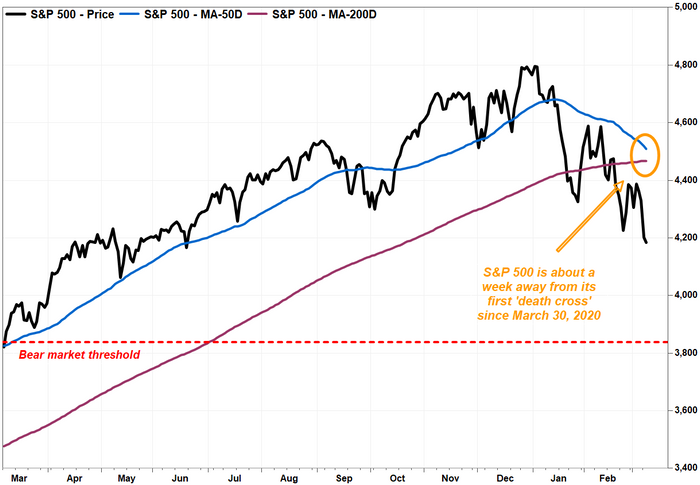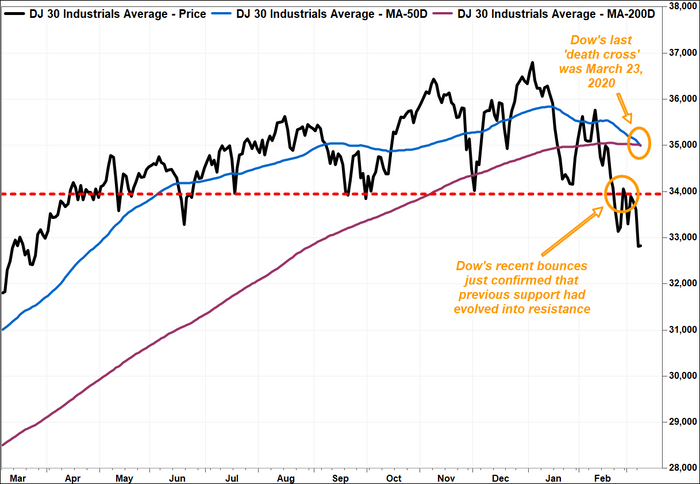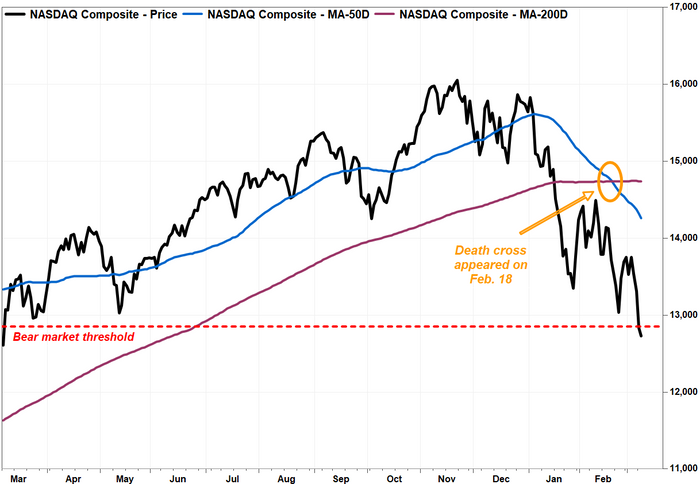The S&P 500 index is closing in on a death cross Monday, an ominous chart pattern that underscores an asset’s downtrend.
A death cross appears when the 50-day moving average crosses below the 200-day moving average, an event that many chart watchers view as marking the spot a shorter-term correction morphs into a longer-term downtrend.
At last check, the S&P 500 index SPX, +0.50% was trading up 0.9%, with its 50-day moving average at 4,464.58 and its 200-day at 4,467.18.

The death cross for the broad-market benchmark comes as the Dow Jones Industrial Average DJIA, +1.03% saw a death cross materialize (the 50-day at 34,990.79 fell below the 200-day MA at 35,008.55) in Tuesday trade, with a nearly 800-point tumble earlier in the month likely hastening that bearish technical development.

A number of other assets have seen death crosses materialize, including the technology-laden Nasdaq Composite Index COMP, -0.42% in mid February.

The last time the S&P 500 registered a death cross was nearly two years ago on March 30, 2020, at the height of the pandemic-induced selling. The DJIA saw its death cross materialize at what is widely viewed as stock’s bear-market bottom on March 23, 2020.
That makes it worth noting that such crosses aren’t necessarily good market-timing indicators, however, as they are well telegraphed, but they can help put a selloff in historical perspective, technicians say.
The decline in the broader market was taking hold amid an intensifying clash in Eastern Europe, raising the prospects of a slowdown in the global economy and a jump in values of commodities. A fourth round of talks between Ukrainian and Russian diplomats was under way on Monday.
See: More than a quarter of Nasdaq-100 stocks are in bear markets—Wall Street sees a buying opportunity
Crude-oil futures CL.1, -7.35%, meanwhile, were declining, after hitting the highest prices since 2008 several days ago, as the U.S. and the U.K. set out to ban purchases of energy from Russia in response to its unprovoked invasion in Ukraine. The European Union, which has grown dependent on Russia crude and natural gas, has said it hopes to wean itself off energy assets out of Moscow by the coming winter.
The geopolitical tensions combined with fears that the U.S. central bank, and other global monetary policy makers, may need to lift interest rates to combat swelling inflationary pressures, was contributing to the market’s bearish overall tone.
A week ago, the Nasdaq Composite finished in a bear market, falling by 20% from its Nov. 19 peak and the Dow industrials notched its first correction, a decline of at least 10% (but no greater than 20%) in over two years.
—Tomi Kilgore contributed to this article.







